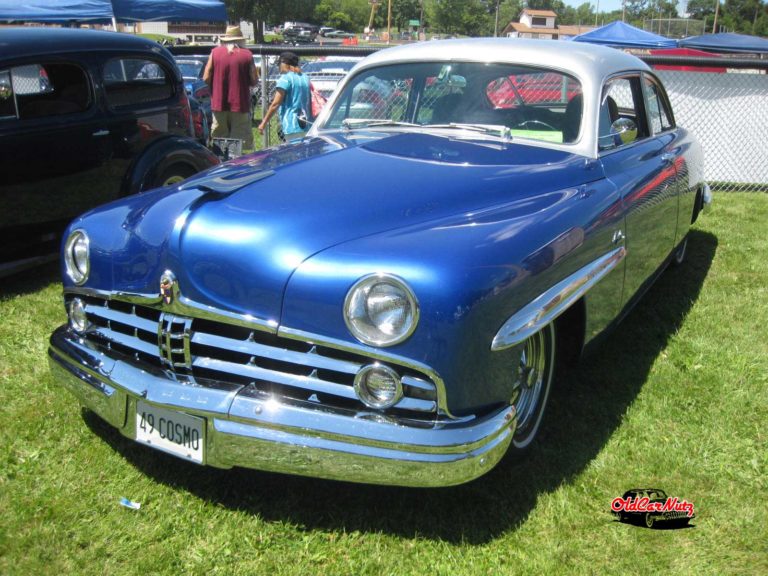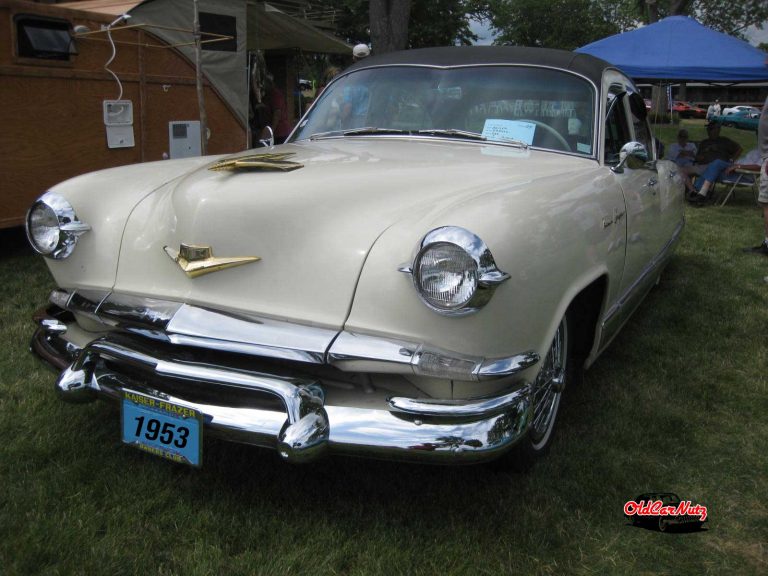The 1909 Brush Runabout offers you a unique glimpse into early automotive innovation. You’ll find a lightweight wooden construction paired with a single-cylinder engine producing 6.5-9 horsepower.
Its simple design includes a 74-inch wheelbase, mechanical rear brakes, and wooden axles that deliver direct road feedback.
At $500, it was marketed as “Everyman’s Car,” capable of reaching speeds up to 50 mph.
The Brush’s endurance-proven design and historical significance make it an intriguing piece of automotive heritage to explore.
Design Elements and Construction Details
While many early automakers relied on metal construction, the 1909 Brush Runabout took a uniquely innovative approach by using wood as its primary building material.
You’ll find wooden axles, a wood-rimmed steering wheel, and wood-spoke wheels throughout the vehicle’s design. The car’s 74-inch wheelbase creates a compact yet sturdy platform that’s perfect for the runabout style.
Look closely at the body, and you’ll notice its simple two-seat layout with sweeping fenders connected by short running boards. The Liberty-Brush variant features bicycle-style fenders instead.
The brass radiator shell adds a touch of style, while the external handbrake gives you straightforward operation. Natural color schemes with wood accents complete the car’s distinctive early automotive aesthetic.
Engine Specifications and Performance
Three distinct engine configurations powered the 1909 Brush Runabout through its evolution.
You’ll find early models equipped with a horizontal single-cylinder engine, producing between 6.5 and 9 horsepower from its substantial 98.2 cubic inch displacement. The engine’s square bore and stroke both measured 5 inches, while its cast iron construction featured distinctive copper water jackets for cooling.
Later that year, you’d see the introduction of a more powerful two-cylinder flat twin configuration.
This upgraded powerplant delivered 12 horsepower at 2,500 rpm, pushing the Runabout to claimed speeds of 50 mph. To guarantee smooth operation, Brush incorporated twin counterbalance gears, while their patented variable-lift intake valve technology enhanced the engine’s breathing and efficiency.
Driving Experience and Handling
The 1909 Brush Runabout’s driving experience marked a unique blend of simplicity and engagement.
You’ll feel every bump and texture of the road through the wooden axles and basic suspension, while the lightweight design lets you maneuver nimbly through turns. The gearless variable clutch gives you smooth control over your speed, though you’ll need to stay alert – there’s no power assist here.
You won’t find modern safety features or complex controls, but that’s part of the charm. The direct mechanical feedback tells you exactly what’s happening beneath your wheels.
While you won’t break any speed records at 27-50 mph, the responsive handling rewards skilled driving. Just remember to brake early and carefully, as you’ve only got rear-wheel mechanical brakes to slow you down.
Historical Context and Market Impact
As America entered the dawn of mass motorization in 1909, the Brush Runabout emerged as a pioneering force in affordable transportation.
You’ll find its innovative wooden chassis and single-cylinder engine delivered reliable performance at just $500, making it one of the era’s most accessible vehicles.
The Brush’s impact went far beyond its modest price tag.
You’re looking at a car that proved automobiles weren’t just for the wealthy – it was marketed as “Everyman’s Car” and backed up that claim by completing grueling endurance tests like the 2,636-mile Glidden Tour.
While it faced stiff competition from Ford’s Model T, the Brush’s emphasis on simplicity and durability helped shape the industry’s future focus on practical, cost-effective transportation solutions.
Its patents for coil spring suspension and crankshaft balancing would influence automotive design for years to come.
Ownership Costs and Maintenance
Maintaining a 1909 Brush Runabout demands significant attention to both mechanical and wooden components.
You’ll need to regularly inspect the wooden frame for cracks and decay, while keeping the friction-drive transmission properly adjusted. The two-cylinder engine requires careful tuning of spark timing and fuel mixtures to maintain its 12 horsepower output and 50 mph capability.
Finding original parts isn’t easy. You’ll often need custom-made wooden components crafted by specialists. The engine parts must come from specialty suppliers, and you might need to retrofit modern lighting for safety.
Insurance costs run high due to the car’s rarity, and you’ll need climate-controlled storage to protect the wooden construction. Regular oil changes, lubrication, and mechanical adjustments are essential to keep your Runabout running smoothly.
Legacy and Collector Appeal
The 1909 Brush Runabout holds a special place in automotive history. As one of America’s earliest affordable cars, you’ll find its innovative wooden construction and single-cylinder engine reflected a pioneering spirit in automotive design.
While it was produced for only a brief period, its impact on making cars accessible to everyday people can’t be understated.
You will discover that surviving Brush Runabouts are highly sought after by collectors today. They’ve appeared at prestigious auctions like RM Sotheby’s, where well-preserved examples command respect among brass-era enthusiasts.
If you’re lucky enough to find one, you’ll want to check its documented history and restoration quality, as these factors considerably influence its value.
Museums worldwide continue to display these remarkable vehicles, preserving their legacy as examples of early automotive ingenuity.
Closing Thoughts
You’ll find the 1909 Brush Runabout remains a fascinating piece of automotive history that perfectly captures the innovative spirit of early motoring.
From its unique wooden chassis to the rugged single-cylinder engine, every detail showcases ingenious problem-solving.
While not the fastest or most luxurious car of its era, you’re looking at a true pioneer that helped make automobiles accessible to everyday Americans. Its influence still resonates today.



